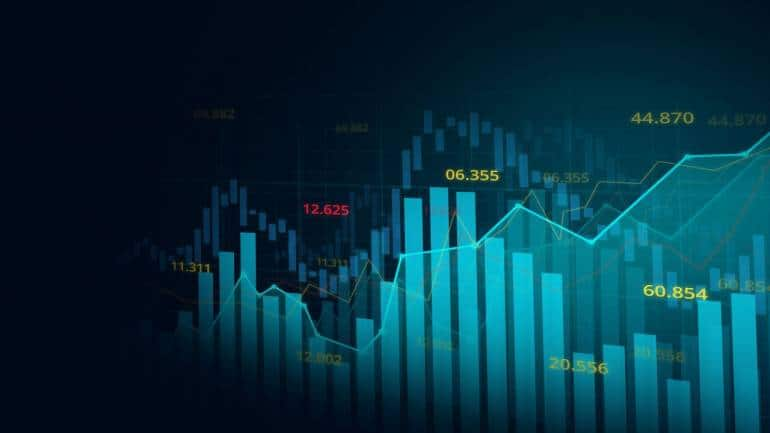How to Evaluate a Stock Using the P/E Ratio and the PEG
Nov 20, 2023 By Susan Kelly
For investors, the P/E ratio is one of the most often used indicators to evaluate a company's stock value. Additionally, the P/E ratio can reflect how a company's stock price compares to its industry group or a benchmark, such as the S&P 500 index, in terms of its valuation. Investors can use the P/E ratio to compare the market value of a stock to the earnings per share (EPS) of a firm. The P/E ratio displays the current market price of an equity based on its expected profits in the future.
What is the P/E Ratio?
A company's P/E ratio may be calculated by dividing its share price by its earnings per share. It's like this: Using the P/E ratio, you can see if a stock's market price appropriately reflects its long-term earnings potential or its worth over the long term. Using the example above, the P/E ratio of a business with $100 in market capitalization and yearly earnings of $4 per share is 25.
The P/E Ratio Has Three Variations

To calculate a company's price-to-earnings (P/E) ratio, you divide the company's current stock price by its current earnings per share. P/E ratios are usually computed using the stock's current price, but they may also be calculated using the stock's average price over a specified period. There are three ways to calculate the P/E ratio when it comes to earnings, and each tells a different story about a company.
TTM Profit
The P/E ratio may be calculated using a company's annual earnings. The trailing P/E ratio, or 12-month earnings trailing, describes this. As a result of using real, reported data, factoring in prior profits is commonly employed in the appraisal of businesses.
The trailing P/E ratio is used by several financial websites, including Google Finance and Yahoo! Finance. M1 Finance and Robinhood, two of the most popular financial applications, also employ TTM profits.
Foreseeable Profits
Calculating the P/E ratio may also be done using an estimate of future profits. This so-called "ahead P/E ratio" doesn't rely on published statistics, but it takes advantage of what is now known about an organization's future performance. Consensus Forward PE is a term Morningstar uses to describe this strategy. Apple's PE is estimated at 28 using this approach.
Using Shiller's P/E
Average earnings over some time can also be used. The Shiller P/E ratio, commonly known as the CAP/E ratio, is the most well-known example of this method. Based on ten years of inflation-adjusted earnings data, Shiller PE is determined by dividing the price by that data. The S&P 500 index is typically a gauge of the market's value. Currently, the S&P 500's Shiller PE is a little over 30.
The P/E Ratio Calculation

It is derived by dividing the market value of a share by the company's profits per share, which is the P/E ratio. A company's financial health may be gauged by looking at its EPS or earnings assigned to each outstanding share of its common stock. If all of a company's profits were distributed to its shareholders, then earnings per share are the fraction of net income that would be distributed per share.
P/E Ratio Analysis
As previously indicated, a stock's value is determined by comparing it to other equities in its industry group. Each industrial category comprises stocks with comparable companies, such as banking or financial services. In most circumstances, a certain business cycle period will favor a particular industrial group. As a result, when a certain cycle's turn comes around, many professional investors will focus on a single industrial group. Remember that the P/E ratio measures the company's predicted profits.
A PEG Ratio Example
Consider future growth forecasts, and we may evaluate the relative values of different industries, even if their P/E ratios are somewhat disparate. This is a benefit of the PEG ratio. This makes it easier to compare the historical P/E ratios of different industries, which tend to have diverse ranges.
Even though these two imaginary firms have significantly different values and growth rates, the PEG ratio provides an apples-to-apples analysis of the relative valuations. An explanation of the term "relative value" If a sector or an individual stock is more costly than, say, the S&P 500 or the Nasdaq, it may be calculated mathematically.
Summary
Investors frequently use the price-to-earnings ratio (P/E) to assess whether a firm's stock price is fairly priced in relation to its earnings. When determining a stock's value, the P/E ratio is widely used and easy to calculate, but it has several drawbacks that investors should consider.
The PEG ratio is a better indicator of a stock's value than the P/E ratio since it considers the company's expected future profit growth. The PEG is useful for investors since it provides a forward-looking perspective on a company's future possibilities.

See: How Credit Card Companies Determine Credit Limit?

What Exactly Is Order Flow Payment?

Real Estate Agents Earning

Gravestone Doji Pattern: Mastering This Powerful Trading Signal

What Exactly Are Pain and Suffering?

Unlocking the Mysteries of Credit: How Your Credit Limit Can Make or Break Your Credit Score

Best Online Tutoring Jobs
S and P’s Downgrade of Azul: A Closer Look at the Airline's Debt and Financial Uncertainty

The Review of Kemper Life Insurance

